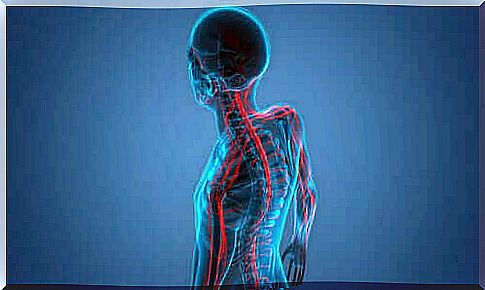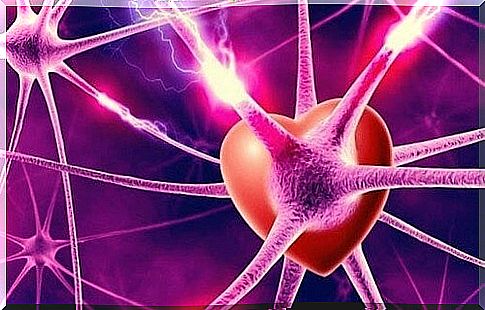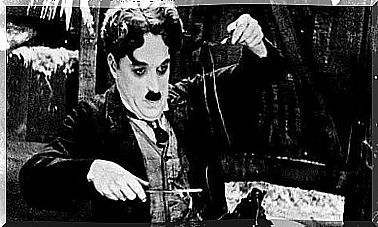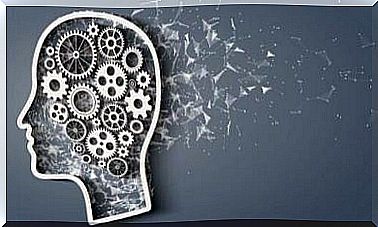Sympathetic Nervous System: Characteristics

Taking an exam, dodging a car that was hurling itself at us, realizing that the alarm did not go off, avoiding someone who makes us uncomfortable or threatens us … All these situations, characterized by stress, anxiety or a distinct feeling of danger, are regulated by that truly complex and fascinating structure which is the sympathetic nervous system.
In everyday life, we are hardly aware of the large number of situations in which this structure intervenes. There is no need to present a real or concrete risk.
Factors such as daily stress or the simple pressure that tacitly accompanies our every day reflect a noteworthy aspect: we are organisms created to make their way, to survive, to keep under control (or at least to try) the significant aspects of our context of belonging. .
Situations as common as running to catch the subway and not arriving late for work, reacting in time to prevent a cup from shattering when falling or preventing our cat from escaping or our child putting a dangerous object in his mouth are examples of the importance. of this structure.
What we feel in these moments, moreover, is well known. The heart accelerates, the muscles contract and we are able to perform very fast movements in a few moments. The entire physiological response triggered by any stimulus and highly emotional situation is orchestrated by the sympathetic nervous system. Let’s see more data in the following paragraphs.

What is the sympathetic nervous system?
The sympathetic nervous system is one of the branches of the autonomic nervous system. Recall that it is a structure that deals with a large number of involuntary functions. Namely, tasks such as heart rate control, digestion, sweating, etc; they are dimensions regulated by the sympathetic nervous system and by the parasympathetic or enteric nervous system.
The sympathetic nervous system is in charge of a number of specific functions: regulating and activating our reflexes and reactions. As we have already indicated, it is that organic center that allows us to react to any “non-neutral” emotional stimulus. As is a situation of mild or intense stress, according to a study conducted by the Welfare University in Osaka.
Furthermore, it is formed by a chain of 23 ganglia that starts from the spinal bulb and connects to both sides of the spinal cord and to the innervated organs.
What neurons is it formed from?
This system consists of two types of neurons. The first are the preganglions, which are connected to the spinal cord and to the ganglion itself. Thus, in order to perform their functions, they will need a very specific neurotransmitter: acetylcholine.
The other neurons present in the sympathetic nervous system are of the postganglionic type. These need norepinephrine in order to connect the ganglion and the innervated organ (heart, liver, stomach, intestine, lungs, etc.).

The areas of the sympathetic nervous system
It is important to know how the sympathetic nervous system is structured. We know how it connects, now let’s see how it is distributed:
- Exit area: this system branches out from the aforementioned spinal bulb, a nucleus that regulates a wide spectrum of involuntary but vital functions for our existence.
- The sympathetic-cervical area, where the entire nerve formation of the head and neck is located.
- Superior cardiac area, with all visceral vascular branches associated with the carotid plexuses, submaxillary area, pharynx, larynx, and so on.
- The sympathetic-thoracic area: a region that encompasses the entire spine, including the joints, intercostal nerves, etc.
- The lumbar area also includes the psoas muscle, the inferior vena cava, etc.
- Pelvic area, which extends from the sacral area to the rectum.
What happens to the body when the sympathetic nervous system is activated?
Knowing what happens to your body in these situations will be useful to all those who suffer from stress every day. It can also be important to know how the sympathetic nervous system affects our health in cases of hypertension, if we suffer from this widespread disorder. A study published in the Journal of Human Stress explains how this link manifests itself and what differences there are in this regard between men and women.
At this point, the mechanism of action of the sympathetic nervous system, in any situation of danger or anxiety, is one of the most complex and fascinating. Let’s see how it reacts to threatening stimuli:
- It triggers the secretion of adrenaline and noradrenaline in the blood, via the kidneys. The purpose of this function is simple: we need more energy and activation to be able to react, and this energy requires, for example, that the liver produce more glucose.
- Our heartbeats increase, so we get more oxygen and nutrients through the blood.
Other signals from the body:
- It manifests bronchodilation : ie they require more oxygen and our lungs are working at maximum effort.
- All activities associated with digestion slow down. It should not be forgotten that this process, in fact, requires a large amount of energy, and that in moments of stress and alertness, the digestive function becomes secondary. The brain requires a response, whether it is to face the stimulus or to flee from it.
- Mydriasis (or pupil dilation) occurs. This involuntary reaction allows us to increase the field of vision and to react more confidently.

As the philosopher Henri-Frédéric Amiel said, our body is the perfect temple of nature. Something that has been given to us and which, however, it is our obligation to care for and study. Only in this way can we better understand ourselves, understand why we are the way we are and why certain problems or conditions arise when we least expect it.









